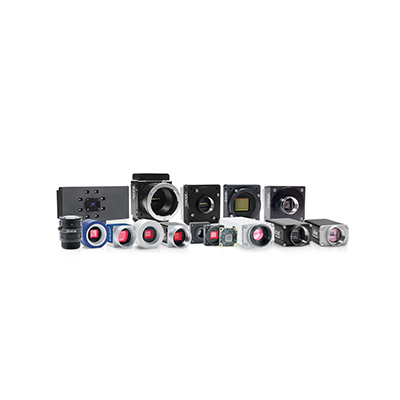Additive manufacturing (AM), also known as 3D printing, is now seen as a transformative technology, finding relevance in almost every industry. Singapore has been ahead of the curve in identifying and investing in this new technology as it seeks to create high-end jobs and offer premium services.
According to a report by the US-based consultancy firm Wohler Associates, the 3D printing industry worldwide was worth over US$5 billion in 2015, a whopping 25.9 percent increase in its Corporate Annual Growth Rate (CAGR) from the year before.
To make the most of this buoyant growth, Singapore announced plans in 2013 to invest S$500 million (US$359 million) in this space under a Future of Manufacturing scheme. This was to be distributed across several initiatives over a span of five years, the most significant being the establishment of the National Additive Manufacturing Innovation Cluster (NAMIC).
NAMIC’s 360-degree approach
“NAMIC was set up to help accelerate and expand the 3D printing industry eco-system in Singapore towards value creation in the digital economy,” said Dr Ho Chaw Sing, managing director of NAMIC and NTUitive, the innovation and enterprise arm of the Nanyang Technological University (NTU).
“We have established industry sector specific initiatives to address industry vertical pain-points. We aim to seed companies with industrial 3D printing know-how, establishing joint funds in the co-creation and commercialisation process, thus lowering the barriers to industry adoption,” he explained.
Led by NTUitive with support from the National Research Foundation (NRF), in partnership with SPRING Singapore and the Singapore Economic Development Board, NAMIC is also co-founded by the National University of Singapore (NUS) and the Singapore University of Technology and Design (SUTD).
NAMIC is taking a well-rounded approach to foster the growth of the 3D printing industry in Singapore. It leverages the 3D printing application domain expertise from STEM (science, technology, engineering and mathematics) universities and various research institutes in the city-state and focuses on commercial and application specific outcomes.
The Cluster also fosters collaborative partnerships with international and local companies to in application and translation research to achieve leadership position, creating an ecosystem for old and new business growth, and developing a platform for research and testing.
“The growth of our industries over the next few years will be severely curtailed without the design freedom and innovation enablers such as 3D printing,” Ho said.
“Specifically, hybrid (additive and subtractive) additive manufacturing technology will be an integral feature in factories of the future. New business models and products with innovative, generative designs will evolve with AM adoption.”
NAMIC has been collaborating with multinational companies (MNCs) in diverse sectors. For instance, it tied up with U.S.-based Intellectual Ventures to create a method for authenticating 3D printed products. The co-developed technology allows printers to watermark unique identifiers using a variety of materials. First implemented in stainless steel, the Embedded Identifier Module (EIM) is now close to impossible to remove or alter, and can be read with a commercially available readers and sensing methods.
“With counterfeiting increasing globally, this technology has the potential to help safeguard authenticity, which stands as a growing concern for businesses and consumers alike,” said Casey Tegreene, executive vice president, Intellectual Ventures’ Invention Science Fund (ISF).
U.S. multinational software company Autodesk has also joined hands with NAMIC and SUTD’s Digital Manufacturing and Design Centre to roll out a series of workshops in computer-aided design and 3D printing. The workshops are aimed at promoting advanced additive manufacturing tool chains that can be easily adopted by the industry.
Local collaborations
While MNCs can tap on the resources and expertise at NAMIC, local enterprises can also leverage this facility to foster their growth.
“The Singapore government has recognised that in order for our local industries to stay relevant and be competitive in the new digital world, key technologies such as additive manufacturing, automation, data analytics, and smart connected systems will need to be adopted,” said Ho.
A trailblazer here is the home-grown start-up Gilmour Space Technologies, which launched its self-made rocket in Australia last year. Supported by NAMIC, the start-up also in partnership with the SUTD-MIT International Design Centre and the Digital Manufacturing and Design (DManD) research centre. It is said to be the first company globally to use 3D printed rocket fuel by combining two materials in its “secret sauce” using a self-developed 3D printer.
Another local firm, the global leader in 3D printed regenerative implants, Osteopore International, has partnered with NTU to develop customised scaffold as one of NAMIC’s initiatives. The implants are designed to regrow loss or damaged bone tissue in patients who had undergone trauma surgery.
Meanwhile, Singapore-based IDI-laser is working with NUS to develop a new monitoring system for a type of 3D-based printing process, known as Selective Laser Melting, which can identify internal defects to speed up the printing.
No longer just a passion for hobbyists, 3D printing has received some serious corporate cred in the last few years, making it into almost every next-big-thing list out there. With 3D printing gaining popularity in Singapore, initiatives like NAMIC will accelerate the additive manufacturing ecosystem development, and position the city-state as the world leader within this space.





